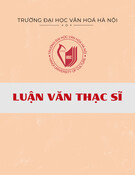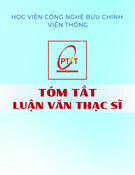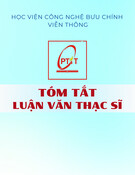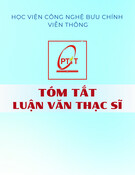
Annals of Mathematics
The main conjecture for CM
elliptic curves at
supersingular primes
By Robert Pollack and Karl Rubin

Annals of Mathematics, 159 (2004), 447–464
The main conjecture for CM elliptic
curves at supersingular primes
By Robert Pollack and Karl Rubin*
Abstract
At a prime of ordinary reduction, the Iwasawa “main conjecture” for ellip-
tic curves relates a Selmer group to a p-adic L-function. In the supersingular
case, the statement of the main conjecture is more complicated as neither the
Selmer group nor the p-adic L-function is well-behaved. Recently Kobayashi
discovered an equivalent formulation of the main conjecture at supersingular
primes that is similar in structure to the ordinary case. Namely, Kobayashi’s
conjecture relates modified Selmer groups, which he defined, with modified p-
adic L-functions defined by the first author. In this paper we prove Kobayashi’s
conjecture for elliptic curves with complex multiplication.
Introduction
Iwasawa theory was introduced into the study of the arithmetic of elliptic
curves by Mazur in the 1970’s. Given an elliptic curve Eover Qand a prime p
there are two parts to such a program: an Iwasawa-Selmer module contain-
ing information about the arithmetic of Eover subfields of the cyclotomic
Zp-extension Q∞of Q, and a p-adic L-function attached to E, belonging to
a suitable Iwasawa algebra. The goal, or “main conjecture”, is to relate these
two objects by proving that the p-adic L-function controls (in precise terms,
is a characteristic power series of the Pontrjagin dual of) the Iwasawa-Selmer
module. The main conjecture has important consequences for the Birch and
Swinnerton-Dyer conjecture for E.
∗The first author was supported by an NSF Postdoctoral Fellowship. The second author was
supported by NSF grant DMS-0140378.
2000 Mathematics Subject Classification. Primary 11G05, 11R23; Secondary 11G40.

448 ROBERT POLLACK AND KARL RUBIN
For primes pwhere Ehas ordinary reduction,
•Mazur introduced and studied the Iwasawa-Selmer module [Ma],
•Mazur and Swinnerton-Dyer constructed the p-adic L-function [MSD],
•the main conjecture was proved by the second author for elliptic curves
with complex multiplication [Ru3],
•Kato proved that the characteristic power series of the Pontrjagin dual
of the Iwasawa-Selmer module divides the p-adic L-function [Ka].
The latter two results are proved using Kolyvagin’s Euler system machinery.
For primes pwhere Ehas supersingular reduction, progress has been much
slower. Using the same definitions as for the ordinary case gives a Selmer mod-
ule that is not a torsion Iwasawa module [Ru1], and a p-adic L-function that
does not belong to the Iwasawa algebra [MTT], [AV]. Perrin-Riou and Kato
made important progress in understanding the case of supersingular primes,
and independently proposed a main conjecture [PR3], [Ka].
More recently, the first author [Po] proved that when pis a prime of super-
singular reduction (and either p>3orap= 0) the “classical” p-adic L-function
corresponds in a precise way to two elements L+
E,L−
Eof the Iwasawa alge-
bra. Shortly thereafter Kobayashi [Ko] defined two submodules Sel+
p(E/Q∞),
Sel−
p(E/Q∞) of the “classical” Selmer module, and proposed a main con-
jecture: that L±
Eis a characteristic power series of the Pontrjagin dual of
Sel±
p(E/Q∞). Kobayashi proved that this conjecture is equivalent to the Kato
and Perrin-Riou conjecture, and (as an application of Kato’s results [Ka])
that the characteristic power series of the Pontrjagin dual of Sel±
p(E/Q∞)
divides L±
E.
The purpose of the present paper is to prove Kobayashi’s main conjecture
when the elliptic curve Ehas complex multiplication:
Theorem.If Eis an elliptic curve over Qwith complex multiplication,
and p>2is a prime where Ehas good supersingular reduction,then L±
Eis a
characteristic power series of the Iwasawa module Hom(Sel±
p(E/Q∞),Qp/Zp).
See Definition 3.3 for the definition of Kobayashi’s Selmer groups
Sel±
p(E/Q∞), and Section 7 for the definition of L±
E. With the same proof (and
a little extra notation) one can prove an analogous result for Sel±
p(E/Q(µp∞)),
the Selmer groups over the full p-cyclotomic field Q(µp∞).
The proof relies on the Euler system of elliptic units, and the results and
methods of [Ru3] which also went into the proof of the main conjecture for
CM elliptic curves at ordinary primes. We sketch the ideas briefly here, but
we defer the precise definitions, statements, and references to the main text
below.

MAIN CONJECTURE FOR SUPERSINGULAR PRIMES 449
Fix an elliptic curve Edefined over Qwith complex multiplication by an
imaginary quadratic field K, and a prime p>2 where Ehas good reduction
(ordinary or supersingular, for the moment). Let pbe a prime of Kabove p,
and let K=K(E[p∞]), the (abelian) extension of Kgenerated by all p-power
torsion points on E. Class field theory gives an exact sequence
(1) 0 −→ E /C−→U/C−→X−→A−→0
where U,E, and Care the inverse limits of the local units, global units, and
elliptic units, respectively, up the tower of abelian extensions K(E[pn]) of K,
and X(resp. A) is the Galois group over K(E[p∞]) of the maximal unrami-
fied outside p(resp. everywhere unramified) abelian p-extension of K(E[p∞]).
Further
(a) the classical Selmer group Selp(E/K) = Hom(X,E[p∞]),
(b) the “Coates-Wiles logarithmic derivatives” of the elliptic units are special
values of Hecke L-functions attached to E,
(c) the Euler system of elliptic units can be used to show that the (torsion)
Iwasawa modules E/Cand Ahave the same characteristic ideal.
If Ehas ordinary reduction at p, then U/Cand Xare torsion Iwasawa
modules. It then follows from (1) and (c) that U/Cand Xhave the same
characteristic ideal, and from (b) that the characteristic ideal of U/Cis a
(“two-variable”) p-adic L-function. Now using (a) and restricting to Q∞⊂K
one can prove the main conjecture in this case.
When Ehas supersingular reduction at p, the Iwasawa modules U/Cand
Xare not torsion (they have rank one), so the argument above breaks down.
However, Kobayashi’s construction suggests a way to remedy this. Namely, one
can define submodules V+,V−⊂Usuch that in the exact sequence induced
from (1)
0−→ E /C−→U/(C+V±)−→ X /image(V±)−→ A −→ 0
we have torsion modules U/(C+V±) and X/image(V±), and the Kobayashi
Selmer groups satisfy
(a′) Sel±
p(E/Q∞) = Hom(X/image(V±),E[p∞])GQ∞.
Using (b) (to relate U/(C+V±) with L±
E) and (c) as above this will enable us
to prove the main conjecture in this case as well.
The layout of the paper is as follows. The general setting and notation
are laid out in Section 1. Sections 2 and 3 describe the classical and Kobayashi
Selmer groups, and Sections 4 and 5 relate Kobayashi’s construction to local
units, elliptic units, and L-values. Section 6 applies the results of [Ru3] to our
situation. The proof of the main theorem (restated as Theorem 7.3 below) is
given in Section 7, and in Section 8 we give some arithmetic applications.

450 ROBERT POLLACK AND KARL RUBIN
1. The setup
Throughout this paper we fix an elliptic curve Edefined over Q, with
complex multiplication by the ring of integers Oof an imaginary quadratic
field K. (No generality is lost by assuming that End(E) is the maximal order
in K, since we could always replace Eby an isogenous curve with this property.)
Fix also a rational prime p>2 where Ehas good supersingular reduction. As
is well known, it follows that premains prime in K. It also follows that
ap=p+1−|E(Fp)|= 0, so we can apply the results of the first author [Po]
and Kobayashi [Ko]. Let Kpand Opdenote the completions of Kand Oat p.
For every klet E[pk] denote kernel of pkin E(¯
Q), E[p∞]=∪kE[pk],
and Tp(E) = lim
←− E[pk]. Let K=K(E[p∞]), let K∞denote the (unique)
Z2
p-extension of K, let Q∞⊂K∞be the cyclotomic Zp-extension of Q, and
let Kcyc =KQ∞⊂K∞be the cyclotomic Zp-extension of K. Let ρdenote
the character
ρ:GK−→ AutOp(E[p∞]) ∼
=O×
p.
Let ˆ
Edenote the formal group giving the kernel of reduction modulo pon E.
The theory of complex multiplication shows that ˆ
Eis a Lubin-Tate formal
group of height two over Opfor the uniformizing parameter −p. It follows that
ρis surjective, even when restricted to an inertia group of pin GK. Therefore
pis totally ramified in K/K and ρinduces an isomorphism Gal(K/K)∼
=O×
p.
We can decompose
Gal(K/K)=∆×Γ+×Γ−
where ∆ = Gal(K/K∞)∼
=Gal(K(E[p])/K) is the non-ppart of Gal(K/K),
which is cyclic of order p2−1, and Γ±is the largest subgroup of Gal(K/K(E[p]))
on which the nontrivial element of Gal(K/Q) acts by ±1. Then Γ+and Γ−
are both free of rank one over Zp.
Let M(resp. L) denote the maximal abelian p-extension of K(E[p∞])
that is unramified outside of the unique prime above p(resp. unramified
everywhere), and let X= Gal(M/K) and A= Gal(L/K). If Fis a finite
extension of Kin Klet OFdenote the ring of integers of F, and define sub-
groups CF⊂EF⊂UF⊂(OF⊗Zp)×as follows. The group UFis the
pro-p-part of the local unit group (OF⊗Zp)×,EFis the closure of the projec-
tion of the global units O×
Finto UF, and CFis the closure of the projection of
the subgroup of elliptic units (as defined for example in §1 of [Ru3]) into UF.
Finally, define
C= lim
←− CF⊂E= lim
←− EF⊂U= lim
←− UF,
inverse limit with respect to the norm map over finite extensions of Kin K.














![Đề án Thạc sĩ: Tổ chức hoạt động văn hóa cho sinh viên Trường Cao đẳng Du lịch Hà Nội [Chuẩn nhất]](https://cdn.tailieu.vn/images/document/thumbnail/2025/20251202/kimphuong1001/135x160/91661764646353.jpg)











